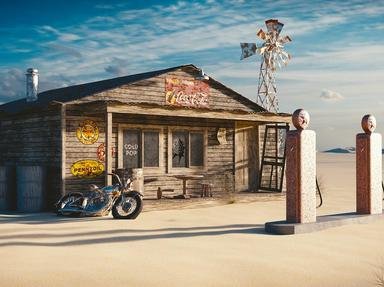Quiz Answer Key and Fun Facts
1. The first Number One Billboard Top 100 hit that could be considered "Rock & Roll" music was what classic that topped the charts on July 9, 1955?
2. "You made me weep, cut me deep, I can't sleep, lover
I was cursed from the first day I fell
You don't want me but you want me
To go on wanting you
Now I pray that you will say that we're through"
These lines comprise the first stanza of a song that would become the first Number One Billboard hit of 1955 as performed by Joan Weber.
3. Frank Sinatra was continuing his comeback from the doldrums earlier in the decade with a Number Five Billboard hit in 1955 featuring these lines.
"Ask the local gentry and they will say it's elementary
Try, try, try to separate them, it's an illusion
Try, try, try, and you will only come to this conclusion"
What song was it?
4. The accompanying slice of lyric was culled from what huge hit that locked down the Number One spot on all of Billboard's various charts for six weeks at the end of 1955?
"Some people say a man is made outta mud
A poor man's made outta muscle and blood
Muscle and blood and skin and bones
A mind that's a-weak and a back that's strong"
5. A singer with the Moonglows, Harvey Fuqua, and the group's manager, Alan Freed, collaborated in the composition of a song that would be their biggest hit, Number One on the R&B chart, Number 20 on the main Billboard charts. But a competing cover version by the McGuire Sisters proved to be an absolute charting monster... ten weeks at Number One on the major Billboard charts! Here's a sample of the lyric that could point you in the right direction.
"'Cause I love you so dearly, please say you'll be mine
Sincerely, oh you know how I love you
I'll do anything for you, please say you'll be mine"
6. A novelty recording act (to say the least) climbed the Billboard charts to Number 22 in 1955 with their version of that old Stephen Foster classic, "Oh Susanna". What was the name of that recording act?
7. In the lines just before and after the accompanying lyric sample come the title of this song, slightly re-arranged.
"I'm as happy as can be
Jimminy cricket, jimminy jack
You make my heart go clickety-clack"
The original recording by LaVern Baker peaked at Number 14 on the Billboard chart while the "sanitized" cover by Georgia Gibbs soared to Number Two, both in 1955. Its title?
8. 1955 was the year that a movie starring William Holden and Jennifer Jones featured a similarly titled and Oscar winning song by the Four Aces. It was Number One on the Billboard charts for six weeks. Careful consideration of this segment of the lyric might help in identifying its title.
"It's the April rose that only grows in the early Spring
Love is nature's way of giving a reason to be living
The golden crown that makes a man a king
Once on a high and windy hill
In the morning mist two lovers kissed and the world stood still
Then your fingers touched my silent heart and taught it how to sing"
9. "I fell for you and I knew the vision of your love's loveliness
I hope and I pray that some day I'll be the vision, the vision of your happiness"
This extended couplet is your lyrical clue to a song that was a Number Eight hit for the Penguins and a Number Three for the Crew-Cuts with their successful cover version. What "Angel" song was it?
10. Like in most of her recordings, Sarah Vaughan elicits a laid-back vibe with this recording, a Number Six hit in 1955. Its title?
"We hurried through our dinner, hurried through the dance
Left before the picture show was through.
Why did we hurry through our dinner,
Hurry through the dance?
To leave some time for this
To hug-a hug-a kiss"
Source: Author
maddogrick16
This quiz was reviewed by FunTrivia editor
agony before going online.
Any errors found in FunTrivia content are routinely corrected through our feedback system.
